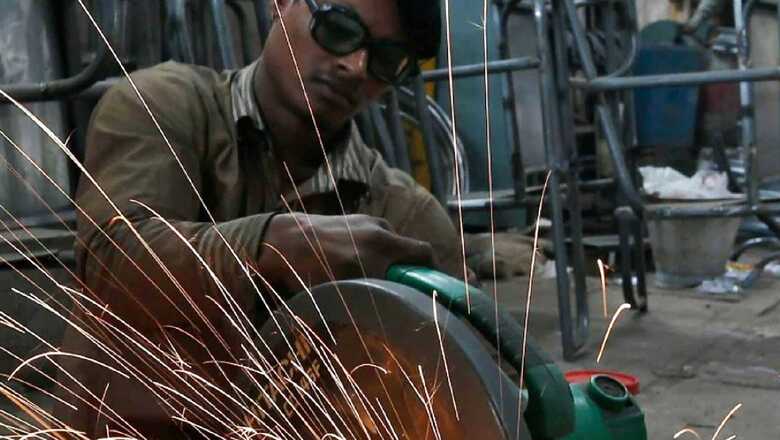
views
After shooting through the roof in the past few months on the global supply chain disruptions due to the Russia-Ukraine war, the commodity prices have now started cooling off. Nickel prices are currently 50.2 per cent down from the high of 2022, aluminium is 36.4 per cent lower than its high seen this year so far. Natural gas, crude oil and zinc are also trading lower by 33.3 per cent, 14.1 per cent and 22.4 per cent, respectively, from this year’s high.
Copper is now at a level which is 21.5 per cent lower than the peak seen this year so far, while iron ore is 21.3 per cent down. In the crop items, wheat is down by 26.4 per cent, corn is lower by 14.5 per cent, and sugar by 9.4 per cent.
The lower commodity prices are expected to help the manufacturing sector by easing their input costs. It will also help control overall inflation.
Since the Russia-Ukraine war in March-end, the global economy continues to grapple with multi-decadal high inflation and slowing growth, persisting geopolitical tensions and sanctions, elevated prices of crude oil and other commodities and lingering COVID-19 related supply chain bottlenecks. Global financial markets have been roiled by turbulence amidst growing stagflation concerns, leading to a tightening of global financial conditions and risks to the growth outlook and financial stability.
“The tense global geopolitical situation and the consequent elevated commodity prices impart considerable uncertainty to the domestic inflation outlook. The restrictions on wheat exports should improve the domestic supplies but the shortfall in the rabi production due to the heat wave could be an offsetting risk. The forecast of a normal south-west monsoon augurs well for the kharif agricultural production and the food price outlook,” according to the Monetary Policy Committee’s (MPC) minutes of the June 2022 meeting.
It also said for the major food commodities, a normal rainfall would moderate the prices, although the international supply conditions for food commodities would be a factor that would affect the course of food price inflation.
However, it said the inflationary pressures that have intensified since March 2022 are expected to remain a concern in FY2022-23 unless the international supply conditions improve quickly.
It added that the war in Europe is lingering. The end of war and sanctions are nowhere in sight. The uncertainty continues. Global growth and trade are steadily decelerating, global commodity prices remain firm and financial markets worldwide are turning more volatile. “While prices of a few commodities – such as metals and fertilisers – have seen some softening, most food and all energy prices remain elevated,” according to the minutes.
The retail inflation in India in May stood at 7.04 per cent, which is above the RBI’s comfort level of 2-6 per cent.
On the assumption of a normal monsoon in 2022 and average crude oil price (Indian basket) of $105 per barrel, the RBI has projected inflation at 6.7 per cent in 2022-23, with Q1 at 7.5 per cent; Q2 at 7.4 per cent; Q3 at 6.2 per cent; and Q4 at 5.8 per cent, with risks evenly balanced.
Read all the Latest News , Breaking News , watch Top Videos and Live TV here.




















Comments
0 comment